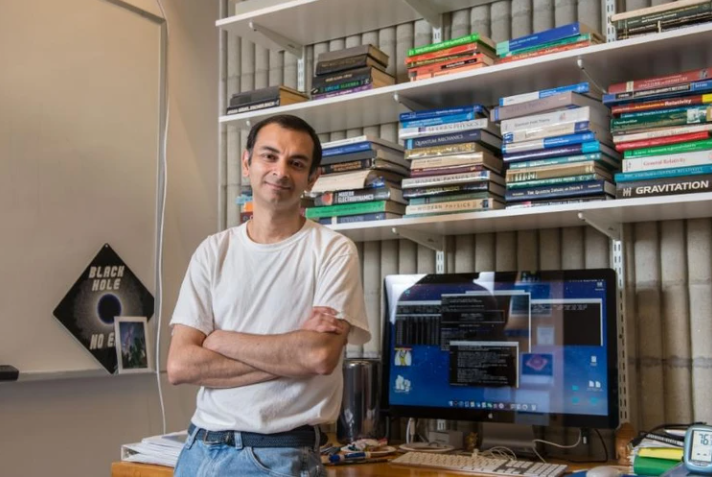UMass Dartmouth researcher named a prestigious American Physical Society Fellow
Adjunct faculty member Gaurav Khanna honored for Physics research on black holes

Dr. Gaurav Khanna, Adjunct Professor, and longtime Physics researcher at UMass Dartmouth was recently elected Fellow of the American Physical Society (APS) by the APS Council of Representatives. Khanna is the first APS Fellow in the history of the University.
Khanna was elected for his pioneering work in computational relativity, including innovative supercomputing techniques, computations of gravitational perturbations of black holes, gravitational waveforms from extreme mass-ratio binaries, classical black hole physics, and quantum gravity.
According to the American Physical Society, the Fellowship program was created to recognize members who may have made advances in physics through original research and publication, or made significant innovative contributions in the application of physics to science and technology. They may also have made significant contributions to the teaching of physics or service and participation in the activities of the Society.
In early 2021, Khanna and his research team discovered that a special kind of black hole violates black hole uniqueness, the so-called “no hair” theorem. Specifically, the team studied extremal black holes — holes that are “saturated” with the maximum charge or spin they can carry. They found that there is a quantity that can be constructed from the spacetime curvature at the black hole horizon that is conserved, and measurable by a distant observer. Since this quantity depends on how the black hole was formed, and not just on the three classical attributes, it violates black hole uniqueness.
When the team behind the Laser Interferometer Gravitational-Wave Observatory (LIGO) received the 2017 Nobel Prize in Physics for their world-first observation of the universe's gravitational waves, Khanna rejoiced. He had worked on the background science associated with LIGO (black holes and gravitational waves) for two decades, including improving the computational models of binary black hole systems that are one of the strongest sources of these waves in nature.